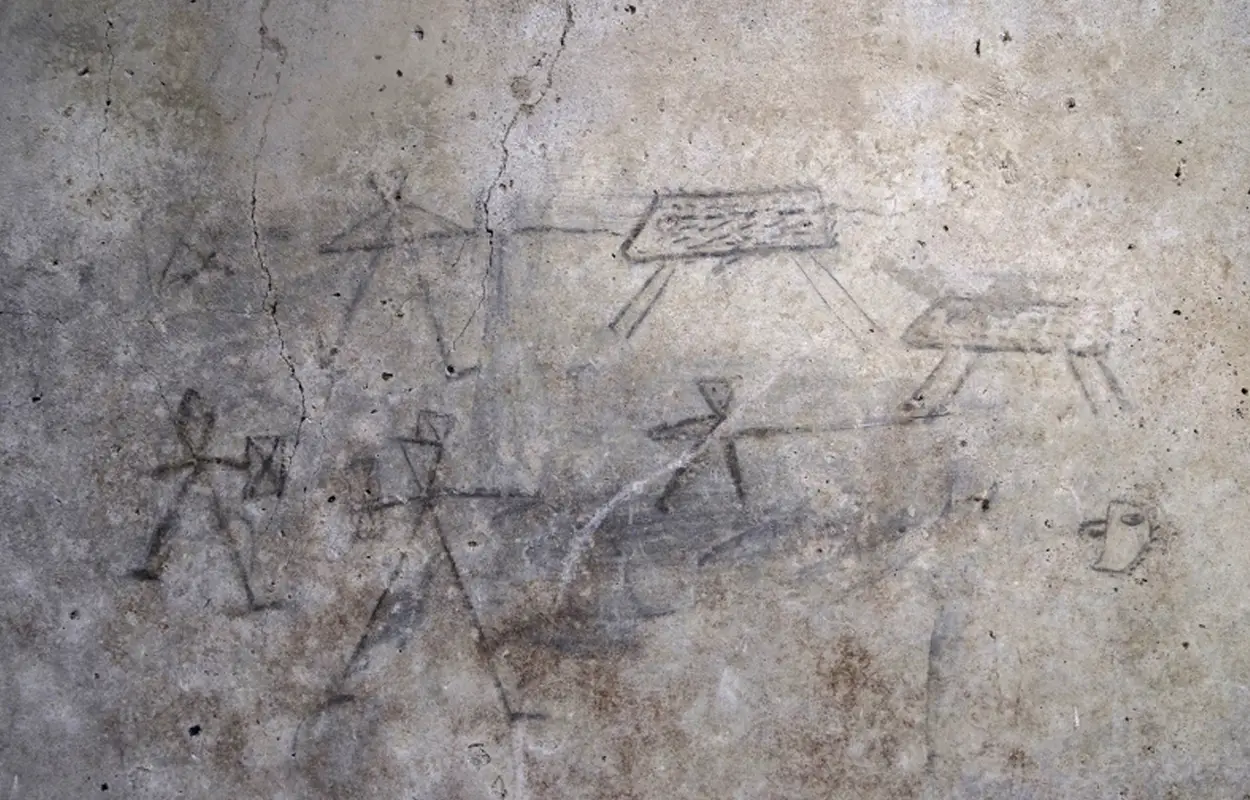Archaeologists have uncovered ancient graffiti depicting gladiators during excavations of the house of the Casa del Cenacolo Colonnato enclosure in Pompeii.
Pompeii was a Roman city, located in the modern commune of Pompeii near Naples, Italy.
Pompeii, along with the Roman town of Herculaneum, were buried under 4 to 6 metres of volcanic ash and pumice during the eruption of Mount Vesuvius in AD 79.
Recent excavations at the Casa del Cenacolo Colonnato enclosure on the Via dell’Abbondanza have found ancient graffiti drawings made by children using charcoal. The graffiti was likely made just prior to the volcanic eruption and depicts several scenes of Roman gladiators.
Gabriel Zuchtriegel, Director of the Pompeii Archaeological Park, explained that children living in the complex must have come into contact with this extreme form of spectacularised violence at the amphitheatre.
“The drawings show us the impact of this violence on the imagination of a young boy or girl, subject to the same developmental stages that are still found today,” said Zuchtriegel.
According to the archaeologists, drawings in a corridor adjacent to a service courtyard depict a scene of two gladiators confronting each other, along with a hunting game (venatio) featuring two bestiarii armed with spears.
In an area of the complex used for the storage of amphorae, another series of drawings were uncovered portraying two figures playing with a ball, a wild boar, and a boxing scene. Another boxing scene in the complex immortalizes the act of “knock-out”, but this depiction has been partly covered by whitewash and was drawn using a red mineral pigment.
Header Image Credit : POMPEII
Sources : POMPEII





